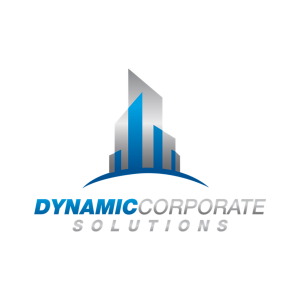In modern businesses, the alignment of organizational goals with operational capabilities is not just a strategic advantage but a necessity for sustainable success. The harmonious relationship between business alignment and capability serves as the cornerstone for achieving one destination, the fulfillment of strategic objectives. As businesses navigate through complexities, they must understand how these two elements intertwine to propel them towards their desired outcomes.

The Essence of Business Alignment
Business alignment encapsulates the process of harmonizing the objectives, strategies, and actions of an organization with its overarching mission and vision. It ensures that every function within the organization works collaboratively towards shared goals.
Effective alignment fosters clarity, direction, and a unified sense of purpose across all levels of the organization. Whether it’s departments aligning with each other or with the overall company strategy, the coherence achieved through alignment fuels agility and responsiveness to market dynamics.
Unveiling Organizational Capabilities
Organizational capabilities refer to the collective competencies, resources, and capacities that enable a company to execute its strategies effectively. These contain a spectrum of elements, including technological infrastructure, human capital, operational processes, and financial resources. Organizational capabilities delineate what a company can do exceptionally well and provide the foundation for achieving its strategic objectives. They empower businesses to innovate, adapt, and capitalize on opportunities in the ever-evolving marketplace.
The Meeting Point
The merger of business alignment and capability signifies the strategic sweet spot where organizational objectives are translated into actionable plans, leveraging the available resources optimally. Striking a balance between ambitious strategic objectives and the resources available is essential for the success and longevity of any business. It requires careful planning, prioritization, and a willingness to adapt to changing circumstances while ensuring that resources are utilized effectively and efficiently. When these two facets are in sync, organizations can achieve remarkable feats. Here’s how they synergize.
Strategic Focus: Business alignment ensures that organizational strategies are coherent and in tune with market demands and internal competencies. It directs efforts towards areas where the organization has the greatest potential for success, maximizing the utilization of its capabilities.
Operational Efficiency: Alignment streamlines processes, eliminates redundancies, and enhances collaboration across departments. This synergy optimizes resource allocation and fosters a culture of efficiency, enabling organizations to achieve more with less.
Agility and Adaptability: A well aligned organization, coupled with robust capabilities, possesses the agility to respond swiftly to market changes and emerging opportunities. It can pivot strategies, reallocate resources, and capitalize on new trends, maintaining a competitive edge in dynamic environments.
Innovation and Growth: The synergy of alignment and capability cultivates an environment conducive to innovation. By aligning strategic objectives with areas of expertise, organizations can channel their capabilities towards driving innovation and fueling growth initiatives.
Stakeholder Satisfaction: When business goals are aligned with capabilities, stakeholders, including customers, employees, and shareholders, experience greater satisfaction. Organizations can deliver on promises effectively, meet customer expectations, and drive shareholder value, thereby fostering long-term relationships and loyalty.
Charting the Course Towards One Destination:
While business alignment and capability integration are distinct concepts, their synergy is crucial for achieving organizational cohesion and competitiveness.
Strategic Clarity: Define clear, measurable objectives that align with the organization’s mission and vision. Ensure that every stakeholder understands their role in achieving these objectives.
Assessment and Development: Continuously assess organizational capabilities to identify strengths, weaknesses, and areas for improvement. Invest in developing capabilities that are essential for executing strategic priorities.
Cross-Functional Collaboration: Foster a culture of collaboration and communication across departments to ensure alignment at all levels of the organization. Break down silos and encourage knowledge sharing to leverage collective expertise.
Flexibility and Adaptability: Remain agile and adaptable in response to changes in the internal and external environment. Regularly revisit strategies and realign as necessary to stay aligned with evolving market dynamics.
Investment in Technology: Embrace technological advancements that enhance organizational capabilities and support strategic objectives. Leverage data analytics, automation, and digital tools to drive efficiency, innovation, and growth.
In conclusion, the journey towards one destination, where business alignment and capability converge, requires a concerted effort to synchronize strategic intent with operational prowess. By fostering synergy between these two critical elements, organizations can navigate through uncertainty, capitalize on opportunities, and chart a course towards sustained success in today’s competitive landscape.
Article written by: Chris Arancibia – Principal Consultant at Dynamic Corporate Solutions

